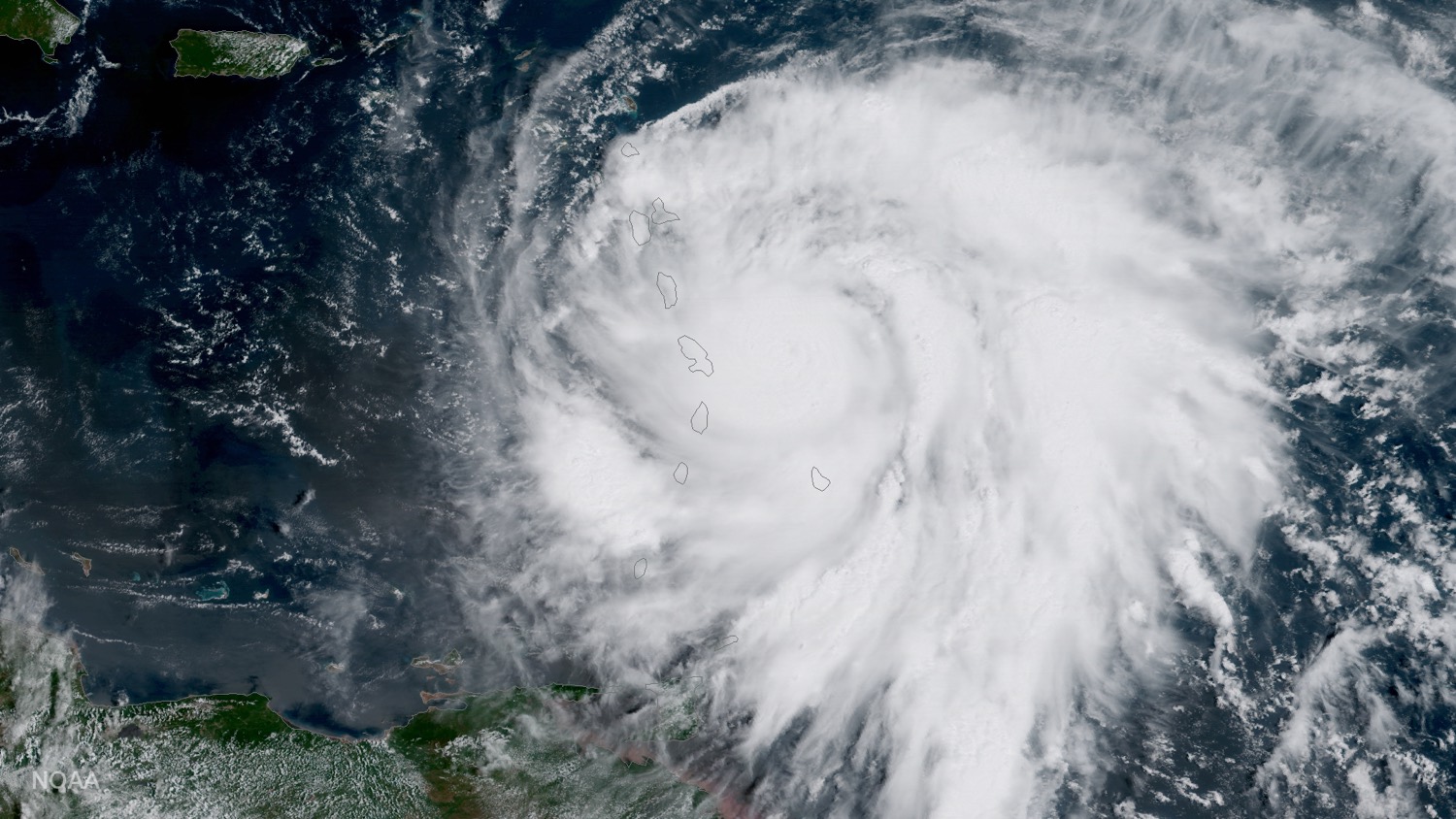Editor's Note: Here are the latest updates on Hurricane Maria.
The "extremely dangerous" Category 4 Hurricane Maria made landfall in Puerto Rico this morning, with sustained winds raging at up to 155 mph (250 k/h), according to the National Hurricane Center (NHC).
As of 8 a.m. ET, the hurricane's eye was over southeast Puerto Rico and winds had died down to a still-menacing 150 mph (240 km/h), the NHC reported. Hurricane Maria is the first Category 4 hurricane to make landfall in Puerto Rico since 1932, according to news reports. The storm hit southeast Puerto Rico, near the city of Yabucoa, CNN reported.
The hurricane smacked into Dominica Tuesday night (Sept. 18), devastating the Caribbean island as a Category 5 storm. The island nation's prime minister posted on Facebook that the roofs were torn off the homes of almost every person he had spoken to. "My roof is gone. I am at the complete mercy of the hurricane," Roosevelt Skerrit posted. In another Facebook post, the prime minister said, "Initial reports are of widespread devastation. So far we have lost all [t]hat money can buy and replace. My greatest fear for the morning is that we will wake to news of serious physical injury and possible deaths as a result of likely landslides triggered by persistent rains."
Evacuation orders were called for four areas in Puerto Rico on Tuesday (Sept. 18), ABC News reported. Thousands of people had sought refuge from the storm in shelters, according to the island's governor: "As of 2:30 a.m. we count 10,059 refugees and 189 pets (in shelters)," Ricardo Rosselló, wrote in a tweet today, as reported by CNN.
Currently, the NHC is predicting large storm surges between 6 and 9 feet (1.8 and 2.7 meters) on Puerto Rico and the U.S. Virgin Islands. The hurricane is also expected to dump about 25 inches (63.5 centimeters) of rainfall in some isolated pockets of Puerto Rico. [Hurricane Season 2017 Guide]
Though Puerto Rico was slammed by Hurricane Irma, it dodged the worst potential impacts of the storm. Irma battered the coastline of Puerto Rico with 30-foot-high (9 m) waves and downed power lines and trees, but the eye of the storm missed the U.S. territory.
Get the world’s most fascinating discoveries delivered straight to your inbox.
Currently, hurricane-force winds extend 60 miles (95 km) from the eye of the storm, while tropical-storm-force winds extend 150 miles (240 km) from the center, the NHC reported.
A hurricane warning is in effect for:
- U.S. Virgin Islands
- British Virgin Islands
- Puerto Rico, Culebra, and Vieques
- Dominican Republic from Cabo Engano to Puerto Plata
- Turks and Caicos Islands and the Southeastern Bahamas
Another storm, Hurricane Jose, is currently lurking farther north in the Atlantic, and is currently projected to cause high tides and surf in areas of New England, according to the NHC.
Editor's Note: This article was updated to reflect the National Hurricane Center's most recent public advisory.
Originally published on Live Science.

Tia is the editor-in-chief (premium) and was formerly managing editor and senior writer for Live Science. Her work has appeared in Scientific American, Wired.com, Science News and other outlets. She holds a master's degree in bioengineering from the University of Washington, a graduate certificate in science writing from UC Santa Cruz and a bachelor's degree in mechanical engineering from the University of Texas at Austin. Tia was part of a team at the Milwaukee Journal Sentinel that published the Empty Cradles series on preterm births, which won multiple awards, including the 2012 Casey Medal for Meritorious Journalism.



